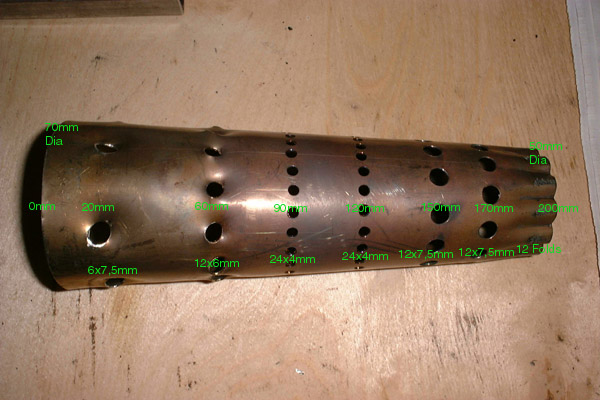Turbocharger Gas Turbine Engine
|
Turbocharger Gas Turbine Engine |
|
One day, I think it must have been about december 1999, a friend of mine mentioned in a subordinate clause, that he has still an old turbocharger sitting on his shelf, remaining from his former life as a car mechanic. He asked if I could think of anything to do with it. I smiled and said “Of course I do!” So he donated it to me. Thanks, Peter! The turbo is a KKK brand (nowadays 3K Warner) and was taken out of an Audi 5T due to loss of power. First I disassembled the turbo completely to diagnose the cause of the failure. I won’t have believed that there could be so much dirt in one little turbocharger. My fingernails showed traces of black for about one week... The main problems were large amounts of oil carbon deposits in the whole hot section, and also some debris in the small oil ducts to the hydrodynamic bearings. Otherwise the turbo seemed to be in a very reasonable condition. Even the bearings seemed to be ok. The turbo was probably used with the wrong oil or the oil filter broke down. |
|
|
||||||||||||||||
|
So I started thinking about how to design and build a combustion chamber as simple and cheap as possible. I decided to use steel water fittings for the main components and build some kind of reverse-flow combustor. For the first experiments I planned to use gaseous propane as fuel, which is very easy to ignite and has a wide range of combustible mixture ratios with air. On the other hand it forms easily explosive mixtures with air, should it leak somewhere out of the engine. |
|
|
||||||||||||
|
|
|
|
||||||||||||
|
|
|
|
|
|
|
And now for the good stuff: The hole pattern of my optimized flame tube. I have made some comparative calculations on the relation of flame tube hole area and compressor wheel discharge (circumferential) area. I used some drawings of well-proven model aircraft gas turbine engines for comparison, that use very similar compressor wheels. This led to an increase of hole size and count in my flame tube. The hole balance between primary and secondary zone, though, had to be maintained. The primary zone holes are tweaked to induce swirl in this area. The engine runs very smoothly with this tube and EGT still decreased a little. The tube is rolled out of 1mm V4A sheet metal (316 or 318 stainless). A friend of mine welded the joint for me. And this is my flame tube: |
 |
|
April 2001 I gave this turbine to Nicolas Benezan (Bene). He is going to do further experiments and add some instrumentation to this engine. Have a look at his page http://www.nicolas.benezan.de/Gasturbines/Turbocharger.html for further information. I simply have too many hobby projects at a time and Bene is preparing to build a larger engine. So this one will be a perfect device for getting familiar with a turbine and for testing some data acquisition equipment. Have LOTS of fun, Bene!
|